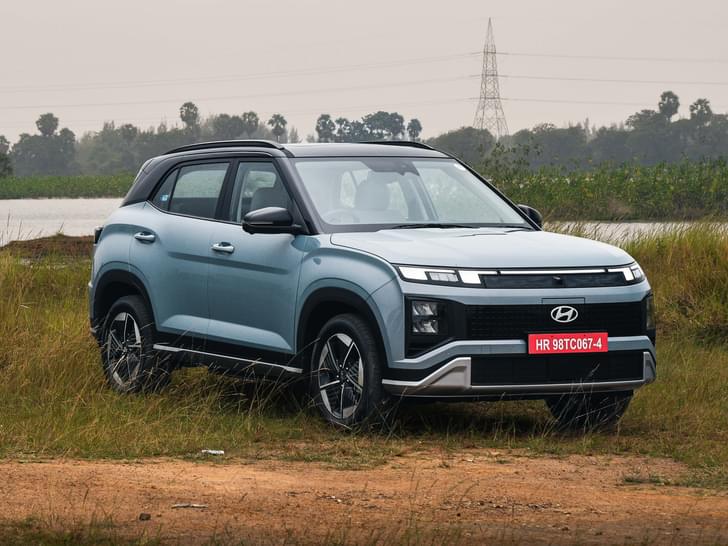Hyundai has taken the wraps off its next-generation compact sedan, the Aura, which is slated to see a market launch on January 21, 2020. Taking over the mantle from the Xcent (which will only be retailed for fleet and commercial usage), the Aura gets all-new styling that closely follows design cues first seen on the Grand i10 Nios hatchback. A more robust construction, new powertrain options and a longer features list further underline the automaker’s intent to bolster its position in the sub-four metre sedan segment.
So, how does the upcoming Hyundai stack up against its closest rivals, including the venerable Maruti Suzuki Dzire, Honda Amaze, Ford Aspire, Tata Tigor and Volkswagen Ameo? We pit all the contenders against each other, on paper.
Dimensions
The Aura measures 3,995mm in length, 1,680mm in width and 1,520mm in height, with a wheelbase (2,450mm) that’s identical to that of the Nios hatchback. Compared to the Xcent then, it has grown 20mm in width and 25mm in wheelbase.
Despite the increased dimensions, the new Hyundai is a full 55mm narrower than its Maruti Suzuki rival and manages to best only the Tata in this department. In terms of height too, it lies in the middle of the pack. The Aura, Dzire and Tigor all have the same wheelbase length, however, they are 40mm short when compared to the segment leader in this aspect – the Ford Aspire.
The new Hyundai’s boot space has reduced by 5 litres compared to the Xcent and now stands at 402 litres. While it’s decent for this class of car, the Aura lags behind the Amaze and Tigor in sheer luggage carrying capacity. All models sit on 15-inch rims, except the Ameo which goes a size up.
Powertrains
Hyundai will provide the Aura with two petrol engines and a single diesel mill, all qualifying for the upcoming BS6 norms. Prospective buyers also have the liberty to choose from manual and automatic transmissions.
In petrol guise, the Aura carries a tweaked iteration of the Xcent’s 1.2-litre naturally aspirated unit that still pumps out the same 83hp and 114Nm of torque. A 5-speed manual transmission is offered as standard, while a more economical AMT auto gearbox replaces the erstwhile torque converter auto unit that is available with the Xcent. As a first for a Hyundai compact sedan, the Aura also gets the Venue SUV’s 1.0-litre, direct-injection, turbo-petrol unit, albeit in a lower state of tune of 100hp and 172Nm. This sportier engine is exclusively mated to a 5-speed manual gearbox.
Comparing all the 1.2-litre engines offered in the segment, Hyundai’s motor is a direct match for those in the Maruti and Tata, however, it trails behind the 90hp and 96hp units of the Honda and Ford, respectively. Moving on to stronger engines, the 1.0-litre turbo mill of the Aura posts a healthy power output (and a class-leading torque figure). However it just can’t measure up to the 123hp, 1.5-litre unit of the Aspire, which is only available with the 6-speed automatic. Having a small 1.0-litre engine without forced induction puts the Volkswagen at the bottom of the pack.
For the time being, only the new Hyundai and Maruti clear the more stringent emission norms, with rest of the OEMs expected to make the upgrade in the coming months. Moreover, the Aura and Aspire 1.2-litre engines can also be specced with a CNG option.
Coming to the diesels, the Aura gets a 1.2-litre oil burner that is good for 75hp and 190Nm of torque. This powertrain can be equipped with either a 5-speed manual transmission or, in another first for a Hyundai compact sedan, with a 5-speed AMT auto transmission.
In this state of tune, Aura’s diesel puts out stronger performance figures compared to the smaller 1.05-litre unit of the Tigor. It also manages to match Xcent’s similar-sized unit as well as the Dzire’s 1.3-litre mill. However, the larger 1.5-litre engines of the Honda and Ford outdo the Hyundai, with Volkswagen taking the lead with segment-leading numbers of 110hp and 250Nm.
Do note, the Aura will be the first BS6-compliant diesel in the segment. The Dzire, Ameo and Tigor are set to lose their respective diesel engines before April 2020, while Amaze and Aspire’s engines will be upgraded to BS6-spec.
Price
In conclusion, the Aura comes off as a decent competitor in its segment. While factors such as radical styling, loads of equipment, a strong turbo-petrol option and a BS6-compliant diesel engine manage to give it an edge over its rivals, these could very well translate into a higher sticker price too. With an estimated ex-showroom price of Rs 6.3-10.2 lakh, the upcoming Hyundai might just end up on the expensive side of the compact sedan segment.
*Figures yet to be certified by ARAI
# Prices for Ameo are ex-showroom, pan-India










































